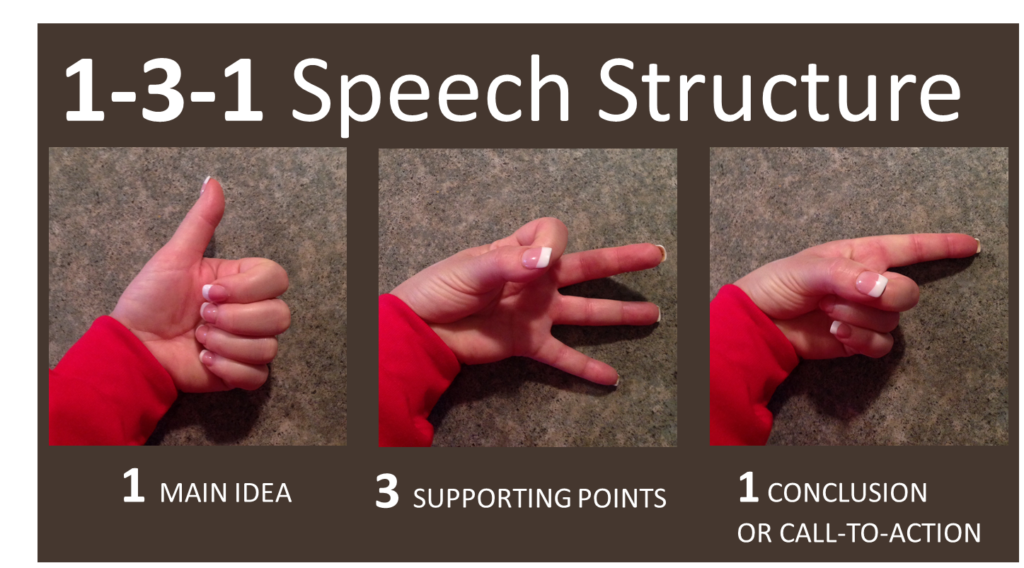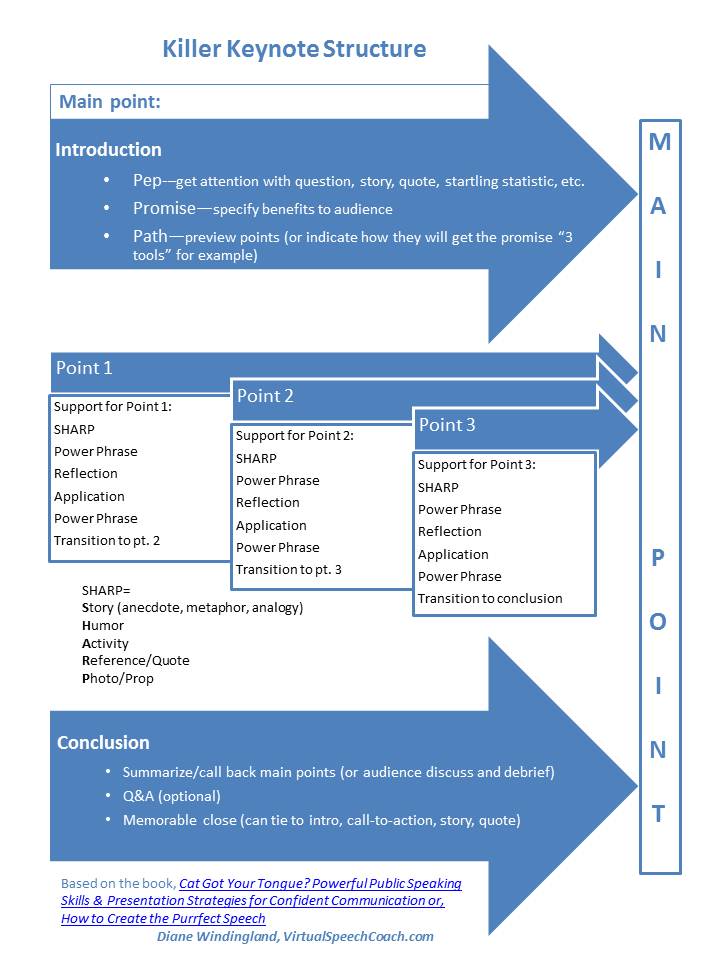“Life’s . . . a tale told by an idiot, full of sound and fury, signifying nothing.” These are the despairing words uttered by Shakespeare’s Macbeth, after hearing of Lady Macbeth’s death.
I’ve often thought they could apply to some speeches I’ve heard.
Sitting in the audience, I’ve despaired over the loss of my time, wondering, “What’s the point?” And, some of those speeches have been well-delivered, “full of sound and fury.”
Have you ever listened to a speech and wondered, “What’s the point?”
The speech wasn’t clear or compelling and the conclusion fizzled?
The problem was most likely a poor speech structure. If your audience can’t figure out what’s important, where the final destination is, and how you are going to get them there, you’ve taken them on a fool’s journey.
“What you say” (content and structure) is, just as important, and usually more important than “how you say it.” (delivery).
An impressive delivery style won’t make up for poor speech structure.
A recent article in the Toastmaster magazine by Brent Kerrigan, introduced a simple, yet effective formula for speech structure: 1-3-1:
- 1 idea
- 3 themes or points of support
- 1 conclusion or call to action
The image at the top is my simple visual to remember it using your hand as a memory aid.
Imagine that you are a Toastmaster and you want to write a speech that explains why people should join Toastmasters (a world wide organization dedicated to empowering individuals to become more effective communicators and leaders).
1 idea: People should join Toastmasters to become more effective communicators and leaders. This idea would be communicated in the introduction, most often after an opening story.
3 themes: (the themes or points can be tailored to the audience). Here are 3 points you could make:
- Communication skills are the number one determining factor in promotions
- Communication and leadership skills are best developed through regular practice
- The club environment of Toastmasters is effective in developing both communication and leadership skills
Each point would be supported through facts, logic, examples and stories (personal stories are highly effective)
1 conclusion or call to action: Join a Toastmasters club. Depending on the occasion, the call to action could be slightly different. For example,when I do a demonstration meeting, my call-to-action is to get commitments to attend and participate in the next meeting.
For an expansion of the concept, see my Killer Keynote Structure:



Hi, I’m Brent Kerrigan from Global Speechwriter. Thanks for reproducing my work (I do appreciate you citing it). If people want to know more about my work, it’s available at the following link: http://www.globalspeechwriter.com.